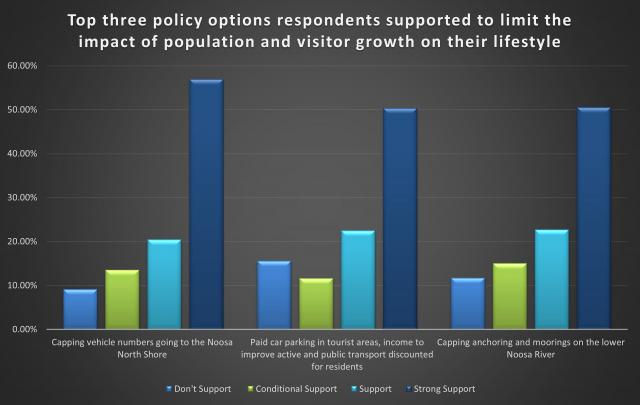By Phil Jarratt
We’re still a long way off city-style traffic and parking problems, but traffic congestion around Noosa is starting to have a major impact on lifestyle and how residents manage their daily routines, according to a new survey.
Councillor Brian Stockwell polled more than 300 Noosa Shire residents through an online survey he developed and promoted in his community newsletter and on Facebook community pages.
“The motivation stemmed from hearing a lot of anecdotal concerns being expressed,” Cr Stockwell said.
“I wanted to get a better sample of the community to drive my deliberations on policy, planning and budgetary decisions in Council. Around 300 people confirmed concerns about the significant impact of traffic not only in tourist hotspots, but also the flow-on effects on shopping journeys and school drop-offs and pick-ups.
“This is no longer just a few people complaining at peak holiday times”, he said, “this is an issue year-round, week in and week out, for Noosa residents. About half the respondents reported that traffic congestion and difficulty finding a car park is having a moderate to major impact on their enjoyment of the Noosa lifestyle”.
Two-thirds reported they regularly experienced traffic congestion in the Main Beach – National Park precinct, with nearly three-quarters reporting regularly having difficulty finding a car park in there.
Traffic congestion was also an issue for 44 per cent of respondents around their local shopping centre during peak periods and markets or events.
Two in three people suggested they were regularly forced to rethink when and where they go to the shops, beach or work because they thought it would be too difficult to find a car park.
Cr Stockwell said it was clear people were choosing to avoid areas, rather than get stuck in traffic.
“What is a little disappointing is the low number of people who are choosing to walk, ride or catch a bus rather than their regular drive to work, school the shops or the beach. Just 13 per cent suggested they did this more frequently than once a fortnight.
“There is clearly a need for more investment in the implementation of our Cycling and Walking Strategy to reduce the barriers that are preventing people making the switch.”
With the shire embarking on a Destination Management Plan, the survey also asked residents their concerns about the impacts of further unplanned growth.
Respondents ranked traffic congestion and parking around tourist precincts, too many cars on Teewah Beach and congestion and conflicts between people and powered craft on the Noosa River as having the greatest impact on Noosa’s reputation as a tourist destination.
“When asked what the one thing they would do to reduce the impact of increased traffic congestion, parking problems and visitors on their lifestyle and/or the Noosa Brand, there were two popular strategies identified,” Cr Stockwell said.
“The first was to increase the frequency of small, potentially electric, free buses, together with increased park and ride options away from Hastings Street, with the second calling for tougher action to achieve a cap for both visitors and residents. Forty per cent of all responses were focussed on these two suggestions.”
Other approaches suggested by respondents included:
• 13 per cent suggested a range of options for limiting vehicles around the Hastings Street precinct, from complete bans during peak times to major infrastructure to allow one way traffic flows.
• 13 per cent suggested they would introduce paid car parking, with many suggesting some form of resident permits which facilitated a discount price for locals.
• The most frequently raised suggestion for the hinterland was fixing the two major intersections in Cooroy.
About 75 per cent of all respondents supported or strongly supported new initiatives to cap vehicle numbers going to the North Shore, and cap anchoring and mooring on the lower Noosa River.
Cr Stockwell concluded: “With 50 per cent of respondents suggesting that growth in traffic congestion and parking problems in tourist precincts would have a major impact on their desired lifestyle, and more concerningly a further 18 per cent suggesting it would be enough to make them think about moving – it is clearly time to take action.”









